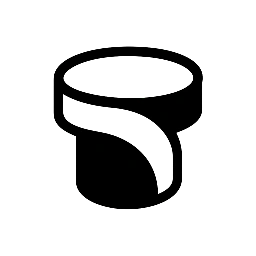Table of contents
Causes of Orthostatic Hypotension in Elderly Patients
CIVIL EMPLOYMENT BASED” OBESITY-9 Orthostatic Hypotension in Older Persons
Cleveland Clinic—the Double Challenge of Hypertension and OH
Management Strategies for Hypertension and OH
Introduction
As the population of the world ages, hypertension and orthostatic hypotension (OH) are ever-increasing phenomena and challenges for providers. Hypertension, or high blood pressure, is among the largest risks for cardiovascular disease, while OH, a steep drop in blood pressure that occurs upon standing, can lead to falls, injury, and decreased quality of life. Hypertension affects the elderly because it is a prevalent condition—in fact, it’s estimated to affect 7 of 10 people over 65 years of age. With advancing age, reduced elasticity of blood vessels and increased arterial stiffness contribute to the onset of hypertension in this population. Diabetes, kidney disease, and sleep apnea can be additional risk factors that can worsen blood pressure.
Causes of Orthostatic Hypotension in Elderly Patients:

– Age-related changes: No baroreflex activation and no compliance of the large arteries may lead to orthostatic hypotension.
– Medications: Drugs like antihypertensive drugs, diuretics, and other antidepressant medicines may result in orthostatic hypotension.
– Dehydration: Less intake and excessive loss may render a person dehydrated and consequently lead to orthostatic hypotension.
– Primary diseases: Orthostatic hypotension is a disease that can be produced by some primary diseases, including Parkinson’s disease, diabetes, and some other neurologic disorders.
– Prolonged bed rest: Prolonged bed rest leads to orthostatic intolerance
CIVIL EMPLOYMENT BASED” OBESITY-9 Orthostatic Hypotension in Older Persons.
Orthostatic hypotension (OH) is a condition where blood pressure rapidly drops when a person stands, causing symptoms like dizziness, light-headedness, and fainting.
OH prevalence clearly rises with age, with up to 30% of those aged over 65 affected. Such age-related changes may involve a progressive decline of baroreflex sensitivity and impairments of vasoregulation, leading to the development of OH in this population.
Cleveland Clinic—the Double Challenge of Hypertension and OH

As treatment for one condition can worsen the other, balancing hypertension and OH management in the elderly is a challenge. For example:
– Antihypertensive medications: These are requisite for treating hypertension; however, these drugs can worsen OH by reducing blood pressure further.
Volume expansion: Increasing intake of IV and oral fluids can help with OH but may worsen hypertension.
Gradual Postural Changes: Standing patients up slowly to relieve OH may not be effective in hypertension.
Management Strategies for Hypertension and OH

Strategies for managing hypertension and OH in the elderly include
Evaluate blood pressure: Regularly assess blood pressure in the supine and standing positions to evaluate the severity of the hypertension and OH.
Adjust antihypertensive: Choose antihypertensive medications that contribute little to OH, e.g., beta-blockers and diuretics.
Advice on lifestyle changes: Recommend lifestyle changes that can reduce hypertension and OH, including routine physical activity, stress reduction, and the maintenance of a healthy diet.
These can also help relieve OH by enhancing venous return and preventing excessive pooling of blood in the legs.
Wear compression stockings.
Adjunctive therapy: If adequate control is not achieved with non-pharmacological measures, adjunctive therapy is indicated; for instance, midodrine or fludrocortisone has been shown to improve symptoms of OH but should only be titrated with caution in patients with hypertension.
Conclusions
The treatment of hypertension, et al., OH requires a careful balancing act, with treatment of one condition often worsening the other. With a holistic method of repeated blood-pressure monitoring, antihypertensive therapy, lifestyle management, and other therapies, health-care workers could alleviate complaints about both conditions and improve the patient’s quality of life.
References:
American Heart Association. (2017). Heart Disease and Stroke Statistics—2017 Update.
National Institute on Aging. (2019). AgePage: High Blood Pressure.
Freeman, R. (2018). Orthostatic Hypotension. New England Journal of Medicine; 378(7), 633–644.
Rutan, G. H., et al. (1992). Orthostatic hypotension among older people: The Cardiovascular Health Study. Hypertension, 19(6), 508-519.
Low, P. A. (2015). Orthostatic hypotension: Pathophysiology, diagnosis, and management. Neurologic Clinics, 33(2), 211-224.
Shibao, C., et al. (2018). A Review of Orthostatic Hypotension in the Elderly. Journals of Gerontology Series A: Biological Sciences and Medical Sciences, 73(10), 1339-1346.
Lanier, J. B., et al. (2011). Management of orthostatic hypotension with compression stockings. 13(10), 741-745, Journal of Clinical Hypertension.
Weber, M. A., et al. (2014). Management of hypertension in the elderly: clinical practice guidelines. This CardioSmart article discusses the J Am


Leave a Reply